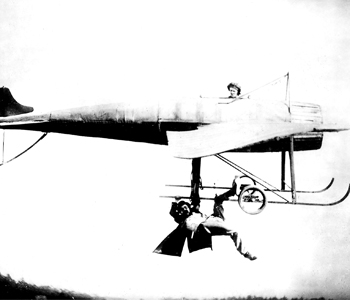Richard Arum and Josipa Roksa
Academically Adrift: Limited Learning on College Campuses
University of Chicago Press
256 pages, 9 x 6 inches
ISBN 978 0226028552
ISBN 978 0226028569
This book is based on the Collegiate Learning Assessment (CLA)—a project in which my coauthor Josipa Roksa and I followed several thousand students across 24 diverse U.S. four-year colleges and universities to investigate how much they improved on a state-of-the-art measure of critical thinking, complex reasoning and written communication.
When comparing the test scores taken after students had invested years of college studying to those taken at the time when they started college, we found that large numbers of students did not improve.
Surveying these same students on their college experiences revealed that they were in classes that placed few demands on them in terms of reading and writing requirements. The students also reported spending relatively few hours studying, and that they were often studying with their friends.
While we only measured the students’ general skills as opposed to subject-specific skills, we are skeptical that the results would be much different if another type of test was given—many of the students we followed did not appear particularly academically engaged with their coursework.
These students were largely academically adrift at these institutions, hence the title of the book.
We attribute this limited learning to the institutional cultures in the schools. Contemporary colleges accomplish many things, but our results suggest that administrators, faculty, and the undergraduate students themselves focus too little attention on learning.

Contemporary colleges accomplish many things, but our results suggest that administrators, faculty, and the undergraduate students themselves focus too little attention on learning.
Over the last three decades, many social scientists have written books examining learning in elementary and secondary education. But little has been written exploring similar questions empirically in higher education.
The relative absence of a significant body of research on undergraduate learning has been the result largely of data limitations. Only recently have objective assessments of students’ broad, general academic skills been developed, and only now are higher education institutions beginning to widely adopt and administer these tests to students.
While the federal government has incorporated longitudinal measures of K-12 student academic performance for decades on national educational surveys, and made this data available to researchers, no comparable data sources have existed for research on higher education.
In relative absence of empirical research on learning in higher education, a large number of books has lamented the state of higher education—based on personal anecdotes, philosophical sentiments, or impressionistic observations. This scholarship critical of the state of undergraduate education has been receiving increasing attention in academic circles, policy conversations and the broader public. But were any of these authors’ concerns warranted? Or, alternatively, were their accounts simply examples of old fogeyism—while in reality students applied themselves and learned at reasonable rates? Only empirical research based on longitudinal measures of student performance could provide sufficient evidence to address these questions.
With the support of several private foundations, from 2005 onward we began to track a large number of students entering as freshmen at colleges and universities. We tracked several thousand students over time in college, to see how they fared, and to determine what factors were associated with the variations in performance.
I was drawn to this question given two longstanding professional commitments.
As a social scientist, I have worked to support the increased collection and analysis of student-level data. For the last several years, in addition to teaching at New York University, I have been working at the Social Science Research Council (SSRC) to promote increased educational research to inform policy and improve practice. At the SSRC, I successfully led recent efforts to organize educational stakeholders in New York City to create the Research Alliance for New York City Schools (an entity loosely modeled after the Consortium on Chicago School Research), focused on ongoing evaluation and assessment research to support public school improvement efforts.
In addition, as an educator, since teaching in the Oakland Public School system after graduating from college, I have been deeply committed to teaching and improving educational opportunities for students, particularly those from disadvantaged backgrounds.
Work on this project brought together my professional commitments as a social scientist and as an educator interested in promoting expanded opportunities.
In recent years, many colleges and universities have been encouraging students to work in groups as a way to accomplish simultaneously two goals that were seen to be complementary. College and universities hoped that group work would promote active, engaged learning and would also facilitate student’s social engagement to promote student retention.
It is clearly possible, in theory, to design learning activities that would indeed accomplish such worthy aims. Our research shows that, in practice, when today’s students study in groups outside of the classroom, their performance (on the assessment of general skills we used) actually declines.
When we looked at the association between students’ self-reported time use and how their performance on the CLA changed over time, we found that hours students reported studying in groups had a similar effect as did hours spent in sororities and fraternities. The more time spent in any of these activities, the greater the decrease in student CLA performance.
On the other hand, when students reported on measures associated with traditional academic rigor, we found improved CLA performance over time.
For example, students who reported spending more time studying alone demonstrated significant improvement on the test; as did students who reported taking courses that had higher levels of reading and writing requirements. Students who had taken a class with more than 20 pages of writing over the course of the semester, and also taken one that had at least 40 pages of reading per week, showed greater gains on the test.
In addition, we found that students in traditional majors found in the arts and sciences (e.g., math, science, social science and humanities) improved at greater rates.
Unfortunately, many of the students we followed did not experience a great deal of academic rigor when moving through U.S. colleges. Although they did well in terms of their grade point averages, they were not asked by their instructors to read or write much, nor were they required to put in long hours of studying to achieve these grades.

When today’s students study in groups outside of the classroom, their performance actually declines.
The significance of the findings on limited learning on college campuses is particularly pronounced given current socio-economic trends.
First, our country faces increased global economic competition. If our higher education institutions are producing large numbers of students who are not developing 21st century skills—such as the capacity to think critically, reason complexly and write effectively—our future economic competitiveness will potentially be undermined.
Second, if our colleges and universities are failing to instill academic dispositions in students—such as a commitment to reading on a regular basis and to approaching material in a critical fashion—future citizens will be less likely to demonstrate behaviors associated with such traits.
In our current work tracking these students since they graduated, we find large numbers of recent college graduates who report that they rarely if ever keep up with the news, discuss public affairs or participate in informed ways in the democratic process. Our colleges and universities have a responsibility to produce graduates who can better assume adult roles as economic actors in a globally competitive economy and as democratic citizens involved in shaping the direction of our political system.




We don't put paywalls. We don't distract you with ads. We don't sell your data.
Please help to keep this running!